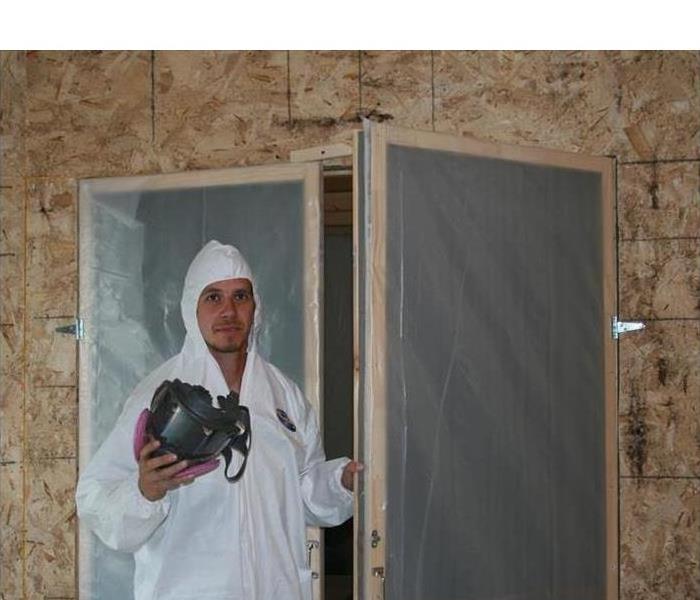The Steps of Mold Remediation
5/11/2020 (Permalink)
The Steps of Mold Remediation
Black mold, or any mold, can easily become an issue on your Crest Hill, IL, property. It only takes a few widely available things to establish a colony:
- A single airborne spore
- A bit of moisture
- Some air for the spore
Most types of mold prefer warmth but thrive in cold environments anyway. Unfortunately, a lot of mold issues start in out of the way areas, such as dark basement corners, in the attic, or behind the drywall. Once you notice the problem, it's time to contact mold cleanup and remediation professionals.
Containment
The first step professionals take when preparing for mold cleanup is establishing containment. This may be as simple as closing the doors between affected and non-affected areas, but it could also involve putting up plastic barriers and wearing personal protective equipment.
Personal Protection
This protective equipment, or PPE, often includes a specialized jumpsuit, gloves, and boots. The purpose of wearing this gear is to protect the technicians and also prevent tracking spores from the containment area through the rest of the property.
Tear Out
As mold spreads and feeds, it does a lot of damage to the structural elements of your home. When cleaning up black mold, technicians will tear out drywall and other materials to prevent further spread and then replace those materials. This step may also include making repairs to dripping faucets or leaky plumbing.
Cleaning and Disinfection
Once the bulk of mold-affected materials have been removed, technicians use specialized cleaners and disinfectants to remove the last vestiges of infection. Although new mold can be reintroduced to the property, technicians do their best to prevent new growth.
Drying of Wet Materials
One of the most important steps to preventing future outbreaks is containing moisture and bringing humidity levels down. Without moisture, new mold spores can't develop into colonies. After professionals have finished, you can takeover mold remediation by regularly inspecting your property for moisture, leaks, and areas of mold. Provide plenty of ventilation and keep your property dry.






 24/7 Emergency Service
24/7 Emergency Service
